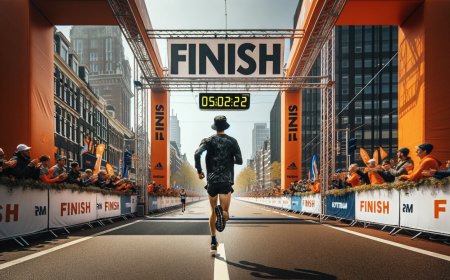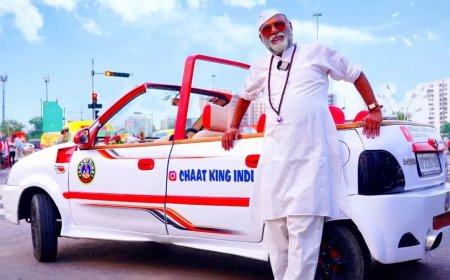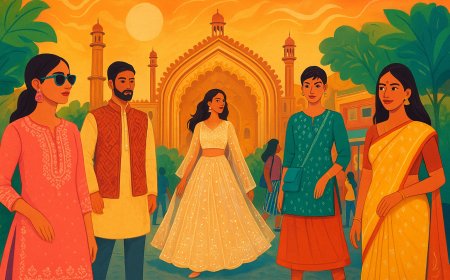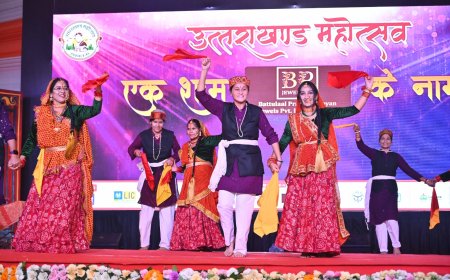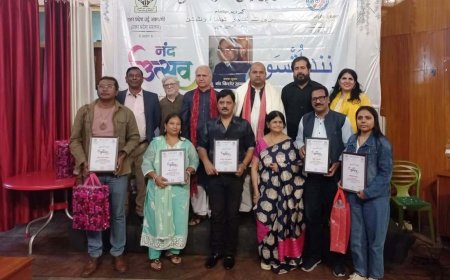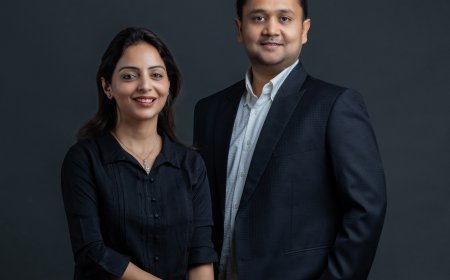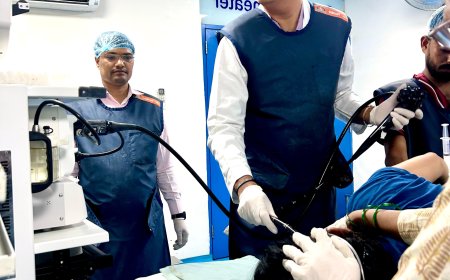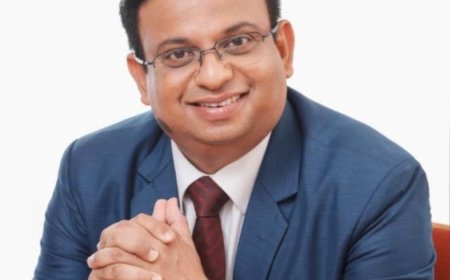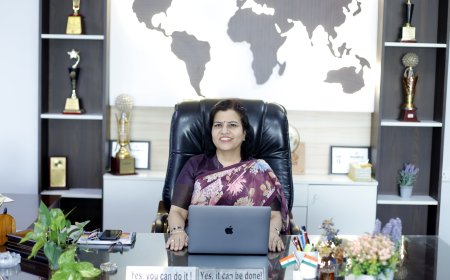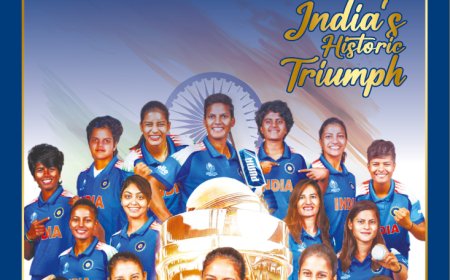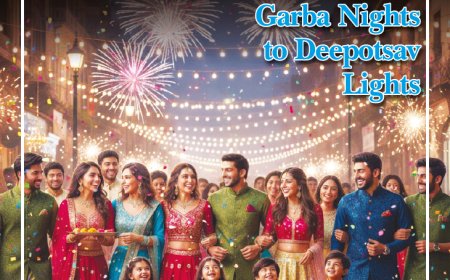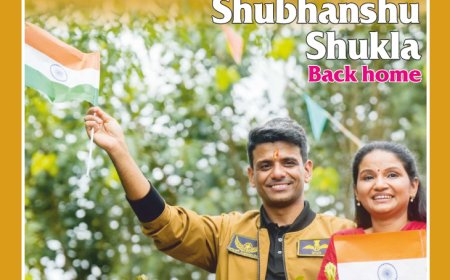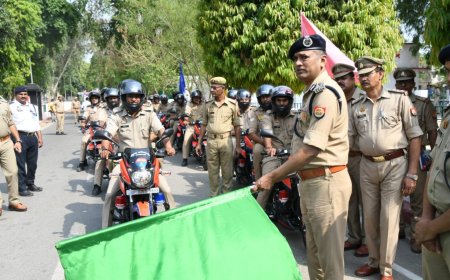Heartland Creators, Global Reach: The Lucknow Story

Lucknow wakes up slowly. The Gomti River glints under the pale winter sun, and the call to prayer from the Bara Imambara drifts softly over the rooftops. In a modest flat in Gomti Nagar, 24-year-old Ayesha Khan adjusts her ring light, checks the fall of her chikankari dupatta, and hits record.
“Aaj hum baat karenge Lucknow ke asli swad ki,” she begins, her voice calm but assured. Ten minutes later, her Reel goes live — another mosaic in the quiet digital empire she has built over three years. By evening, it will cross 300,000 views, earn her ₹18,000 in affiliate sales, and nudge a stranger in Toronto to order a hand-embroidered kurta.
This is Lucknow’s creator economy in 2025 — no red carpets, no paparazzi flashes. Just a steady, stubborn growth rooted in creativity, community, and the confidence of small beginnings.
“People think big cities own the internet,” says Yash Pratap Singh, a social-media coach with 1.7 million followers across platforms. “But the real shift is happening in places like Lucknow, where creators speak the language of the heartland and still reach the world.”
The Numbers Behind the Quiet
India’s creator economy is no longer an afterthought. A joint NASSCOM–Deloitte report pegs its 2025 valuation at ₹1.6 lakh crore, projected to reach ₹8–10 lakh crore by 2030. Tier-2 and Tier-3 cities now power 75 per cent of India’s top 1,000 creators.
Lucknow alone is home to an estimated 2.5 lakh active creators, of whom about 35,000 monetise content regularly. Short videos — Reels and Shorts — make up 72 per cent of their revenue, followed by affiliate marketing (18 per cent) and brand sponsorships (8 per cent).
“Lucknow’s cost arbitrage is brutal,” laughs Gaurav Tiwari, whose Instagram handle @gauravtiwari23 has turned chikankari into a global micro-brand. “My studio is a 400-square-foot room. Rent: ₹12,000. In Mumbai, that buys you a balcony.”
Lower overheads mean more room to reinvest in quality — cameras, lighting, editing tools — and, most importantly, time. “I edit till 3 a.m., sleep four hours, and still have time for family,” Gaurav says. “That rhythm is impossible in a metro.”
The Cultural Motherlode
Lucknow’s content goldmine is its heritage itself. UNESCO’s 2025 designation of the city as a Creative City of Gastronomy was less a surprise and more a global acknowledgment of what creators already knew.
“We don’t invent stories,” says Hassan Ali, whose heritage-walk Reels under @hi__hassan have over 2 million followers. “We just point the camera at what’s been here for centuries.”
Hassan’s most viral video — a 58-second montage of a 150-year-old tunday kebab stall — clocked 14 million views and inspired the Uttar Pradesh Tourism Board to launch an official #TundayTrail campaign.
“One Reel did what a ₹5-crore ad campaign couldn’t,” he says with quiet disbelief. “The algorithm loves authenticity, and Lucknow leaks it from every pore.”
But food is only the gateway. From poetry to fashion, from cricket commentary to culture capsules — Lucknow’s creators are digitising emotion.
The poetry collective Kavishala, for instance, streams weekly Aaghaaz sessions from a 100-year-old haveli in Chowk. “We began with 30 listeners in a room,” recalls co-founder Akhilesh Mishra. “Now 80,000 tune in live, and the chat is a riot of Awadhi, Bhojpuri, and English verses.” Their YouTube channel crossed a million subscribers this year, powered by Super Chats and Patreon-style “Shayari Sangam” memberships.
The Tech Backbone
Behind the poetry and the kebabs lies the silent enabler — technology. Lucknow’s average broadband speed touched 110 Mbps in Q3 2025, thanks to Jio’s 5G rollout and Airtel’s fibre network.
The revamped Chaudhary Charan Singh International Airport now handles 42 cargo flights weekly, slashing delivery timelines for creator merchandise from 12 days to 48 hours.
“I ship chikankari to California faster than my cousin in Noida gets his Amazon parcel,” jokes Gaurav.
Co-working spaces are mushrooming across the city. The Creator’s Corner at Vibhuti Khand — ₹399 a day, with 1 Gbps Wi-Fi and soundproof booths — is booked out every morning. “We host over 120 creators daily,” says manager Ritu Srivastava. “Half are full-time; the rest are college kids exploring content as a career.”
The government, too, is amplifying momentum. Under the One District One Product (ODOP) initiative, 1.32 lakh artisans have been onboarded to digital marketplaces.
“We gave them smartphones, taught them Canva, and linked their catalogues to Instagram Shops,” says ODOP nodal officer Priya Singh. “Sales jumped 340 per cent in 18 months.”
Chikankari alone clocked ₹420 crore in e-commerce exports in FY25, with micro-influencers earning a 7–12 per cent commission.
The Monetisation Matrix
The earnings story of Lucknow’s creators is as layered as their content. A recent Legit Lucknow Creator Survey (September 2025) reveals that nearly four out of five creators — about 78 per cent — earn through Shorts and Reels bonuses, making an average of ₹22,000 per month from platform payouts. Around 62 per cent supplement this with affiliate marketing, averaging ₹38,000 monthly, while 41 per cent collaborate with brands, pulling in roughly ₹65,000. A smaller but more entrepreneurial 29 per cent sell direct-to-consumer merchandise or online courses, touching ₹1.12 lakh a month on average. Meanwhile, about 18 per cent of creators rely on fan support through Super Chats and paid memberships, earning close to ₹14,000.
The figures tell a quiet but profound story: only a small elite — roughly eight per cent — earn more than ₹5 lakh a month, yet almost half the creators clear ₹50,000, comfortably outpacing entry-level white-collar salaries in the city. “The middle is thickening,” says Suraj Sharma, a Web3 evangelist who organises STANFEST gaming meetups. “You don’t need a million followers anymore; you need a tight niche and trust.”
Suraj himself is proof — a former software engineer now earning ₹4.5 lakh a month by blending gaming streams with crypto affiliate codes. “Lucknow’s gamer base grew 180 per cent post-IPL,” he notes. “Kids who watched Lucknow Super Giants now watch me play BGMI at double speed.”
The Community Glue
Isolation can kill creativity, but Lucknow’s creators thrive through community. The directory Legit Lucknow lists over 4,200 verified creators and hosts monthly “Chai & Collabs” mixers.
“We had a poet, a kebab vlogger, and a chikankari designer brainstorm a single campaign,” says founder Aditi Verma. “The result was a 15-Reel series that drove ₹28 lakh in boutique sales.”
The state, too, is taking notice. In July 2025, Chief Minister Yogi Adityanath invited 50 creators to his official residence to discuss the digital ecosystem. “He asked about algorithm pain points,” recalls Yash Pratap. “Three weeks later, the UP Police rolled out a filming policy for heritage sites — reducing permit delays from 15 days to just 4 hours.”
The Shadows
Yet, the growth story has its shadows. Women creators make up 48 per cent of the ecosystem but earn 22 per cent less on average. “Trolling is vicious,” says Ayesha Khan. “One ‘bewakoof ladki’ comment can tank a brand deal.”
Platforms are slowly responding. Instagram’s 2025 “Safe Reels” feature now auto-hides regional slurs, but the emotional toll remains.
Algorithm shifts are another hazard. “My income swung from ₹1.8 lakh to ₹42,000 in one month,” says food vlogger Rohan Srivastava. “YouTube pushed long-form, then killed it, then revived it. We’re all guinea pigs.”
Diversification is survival — nearly 70 per cent of sustainable creators now run three or more revenue streams.
The Next Leap
The next wave is already cresting. AI tools are bridging the polish gap — Veo for B-roll, Suno for background music, CapCut for auto-subtitles in Awadhi — all at under ₹1,000 a month.
Web3 is opening new doors. In October 2025, chikankari NFTs — each linked to a physical garment — sold out in 42 minutes on Lucknow-based platform ArtLoom. “The buyer in Dubai can resell the digital twin while I ship the kurta,” explains Gaurav. “It’s phygital commerce with a nawabi soul.”
The state’s Orange Economy Blueprint earmarks ₹750 crore for creator skilling by 2028. Lucknow Startup Hub now offers “Creator-in-Residence” fellowships — ₹45,000 monthly for six months, with no equity cuts.
Voices from the By-lanes
As dusk settles over Hazratganj, 19-year-old Zoya Fatima records her 100th ghazal. “Meri awaaz chhoti hai, par dil bada hai,” she smiles into the mic. Her livestream peaks at 12,000 concurrent viewers. By night’s end, she’s earned enough to buy her mother’s diabetes medicine and a new tripod.
Across town, 62-year-old Khatoon Begum, better known as Haji Aunty, films her grandson plating galouti kebabs. “Beta, zoom in on the smoke,” she instructs. The Reel will trend under #LucknowKiShaan. “I never imagined my tawa would feed the world,” she chuckles. “But the world is hungry for stories, and we have plenty.”
From Silent to Symphonic
Lucknow’s creator economy is no longer a whisper. It’s a chorus — multilingual, multicoloured, and unmistakably rooted.
As Yash Pratap signs off from his nightly online masterclass, he quotes Ghalib with a twist:
“Ishq ne ‘Ghalib’ ko nikamma kar diya,
warna creator toh bada nikamma hota hai.”
Laughter ripples through the Zoom grid. Outside, the city’s minarets silhouette against the sodium sky. Somewhere, another Reel is rendering, another affiliate link is live, another story is loading. Lucknow is not waiting for permission anymore. It’s already — quietly, steadily — rewriting the script of India’s digital heartland.
What's Your Reaction?











